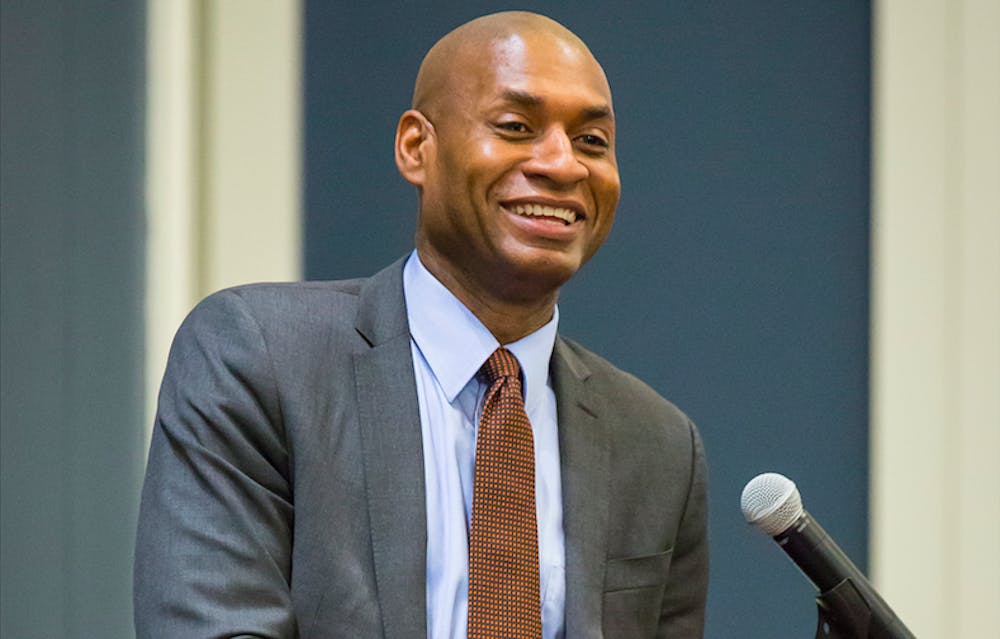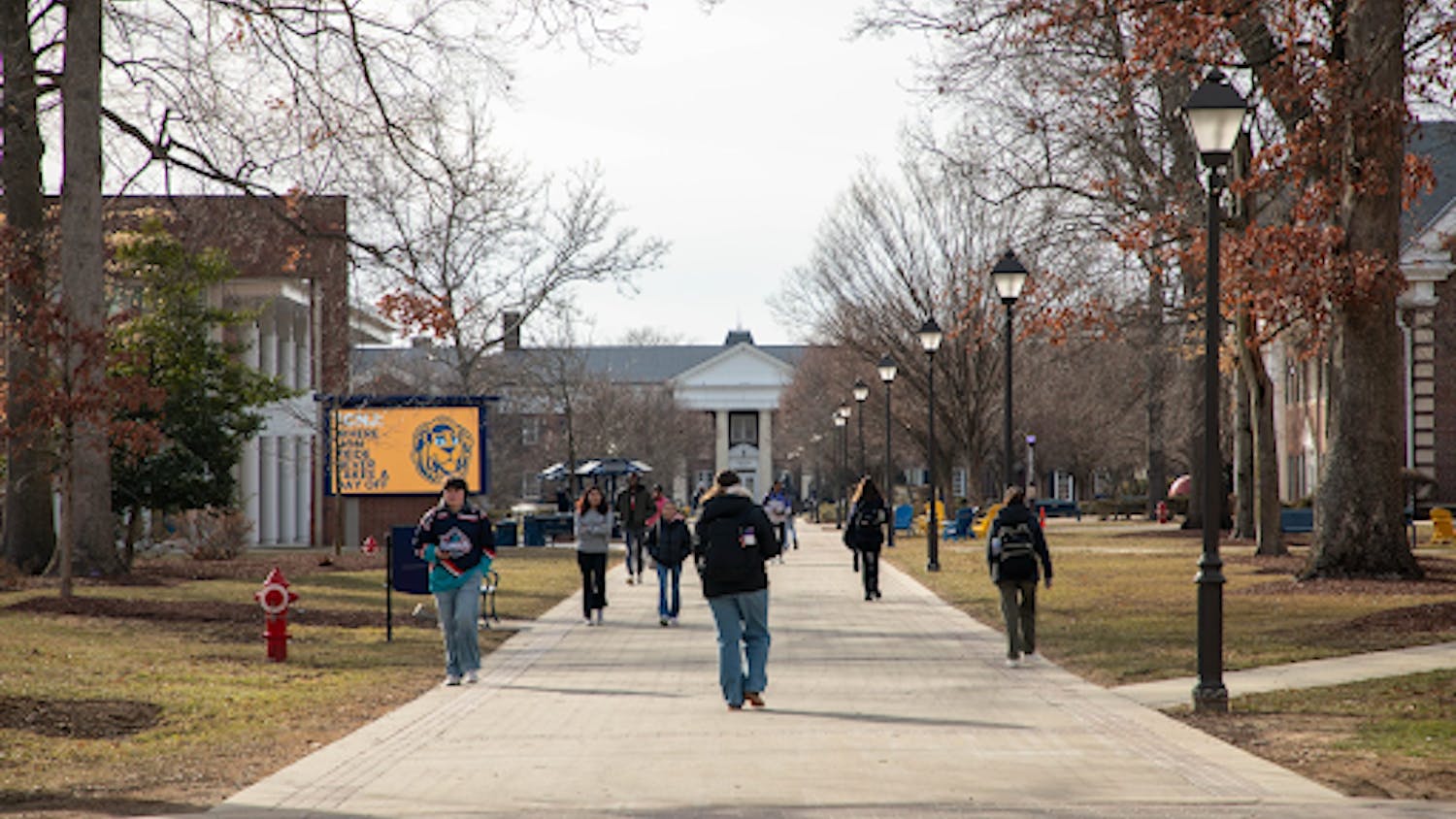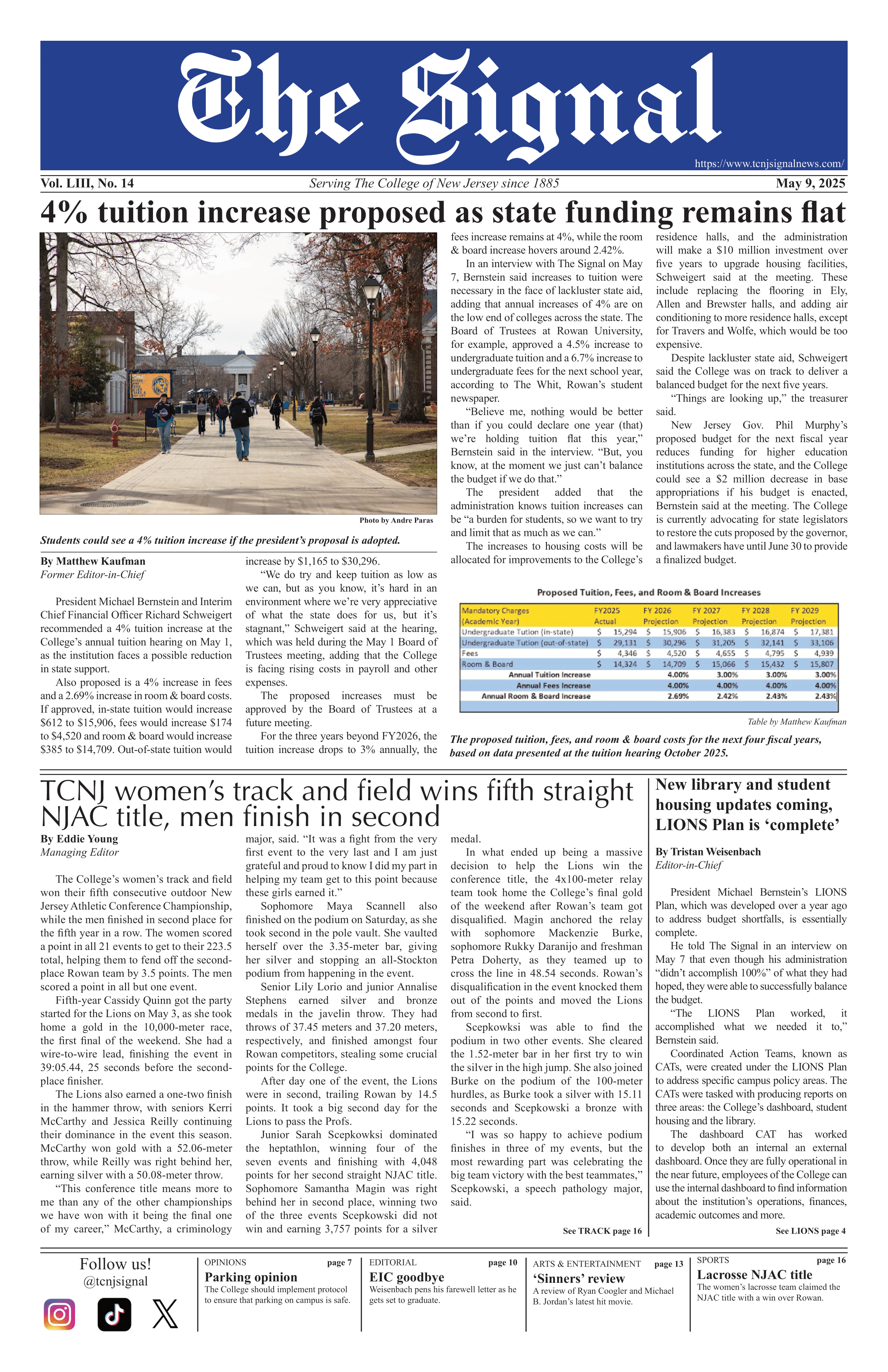By Sydney Shaw
News Editor
Analyzing the intersection between race and policing in America has become a more prominent conversation on the heels of the deaths of unarmed black men such as Michael Brown, Eric Garner and Tamir Rice.
Charles Blow, visual op-ed columnist for the New York Times and author of “Fire Shut Up in My Bones,” questioned the sources and extent of systemic discrimination in a critical discussion with students on Tuesday, March 24, in the Education Building.

“No one denies that police officers have hard jobs,” Blow said. “When a job is done well, it keeps communities safe and society civil. But the way that is accomplished is that officers must encounter a disproportionate number of people who break the law.”
Blow presented the possibility that officers’ fears may be heightened — “and their trigger finger made more itchy” — in high-crime areas because they are more worried about making it home to their families than about the people they encounter making it home to theirs.
“If you overwhelmingly see the bad in people, does it diminish your impulse to search for the good?” he asked. “When is the line crossed from protecting and serving to occupying and suppressing?”
Police are not the only group of individuals who project bias onto others, though, according to Blow.
“Prejudice is a societal poison. Each of us is in danger of ingesting it,” he said. “We are all constantly making judgements, but most of us are not wearing a holster with a gun. That is when the ante is upped about the nature and quality of those judgements.”
Blow told the story of 12-year-old Rice, who was shot down in a park in Cleveland last November when police thought his toy gun was real.
“Not only is the shooting itself disturbing, but the failure to render aid is unconscionable,” Blow said.
For four long minutes, Rice lay on the grass, bleeding out but still alive, while none of the officers hovering about him made an attempt to administer aid.
According to Blow, the same apathy about the immediate administration of care is echoed in other cases.
“After George Zimmerman shot Trayvon Martin, Zimmerman mounted him and stretched his arms wide to prevent him from even clutching the spot where the bullet had entered his body,” Blow said. “Trayvon Martin was still alive. After officers choked Eric Garner until he fell unconscious, no one administered CPR. Instead, they checked his pockets for cigarettes. Garner was still alive.”
Blow went on to bring Ferguson and the murder of Brown into the conversation, explaining that after Officer Darren Wilson shot Brown, Wilson didn’t check to see if Brown was breathing or if he had a pulse. Brown’s body lay in the street for four hours.
“This list goes on, quite literally, ad nauseam,” Blow said.
Blow also shared significant statistics about marriage and birth rates in Ferguson — and in black communities in general — to illustrate structural racism inherent in our society.
“Married black women used to have a higher birth rate than married white women,” he said. “But that birth rate for married black women has dropped dramatically to the point that (it) is significantly lower than that of married white women.”
This causes the birth rates of unmarried black women to appear extremely high in comparison. Blow also attributes this misconception to the explosion in the incarceration rate in the U.S. during the last few decades.
“This trend has disproportionately ensnared young black men, sucking hundreds of thousands of marriage-age men out of communities,” Blow said.
He used Ferguson as an example, where, according to Forbes, half of young black men are ‘missing’ from the community. According to the U.S. Census Bureau, while there are 1,182 black women living in Ferguson between the ages of 24 and 25, there are only 577 black men in that same age group.
“There are two young black women for every young black man in Ferguson,” Blow said, “and we ask ourselves about marriage rates.”
Blow said blacks are overrepresented in the media as crime suspects, and whites are overrepresented as crime victims, further warping the facts and playing into systemic biases.
He cited Lisa Bloom’s book, “Suspicion Nation,” in which she discusses how the standard assumption is that criminals are blacks and blacks are criminals.
According to Bloom’s book, in one study, 60 percent of viewers who viewed a crime story with no picture of the perpetrator falsely claimed seeing one. And of those, 70 percent believe that the person they saw was black.
“When we think about crime, we ‘see’ black, even when it is not present,” Blow said. “We have to separate mythology from the truth.”
The first step in doing so, as Blow suggests, is to open our eyes to daily instances of racial bias. To understand what racial bias is, where it occurs and how it crosses ethnic and racial lines is crucial toward achieving justice.
“Racism is interpersonal and structural. It is current and historical. It is explicit and implicit. It is articulate and it is silent,” Blow said. “Biases are pervasive, but can also be spectral, moving in and out of concentration without notice, leaving no trace, even without our own awareness.”







